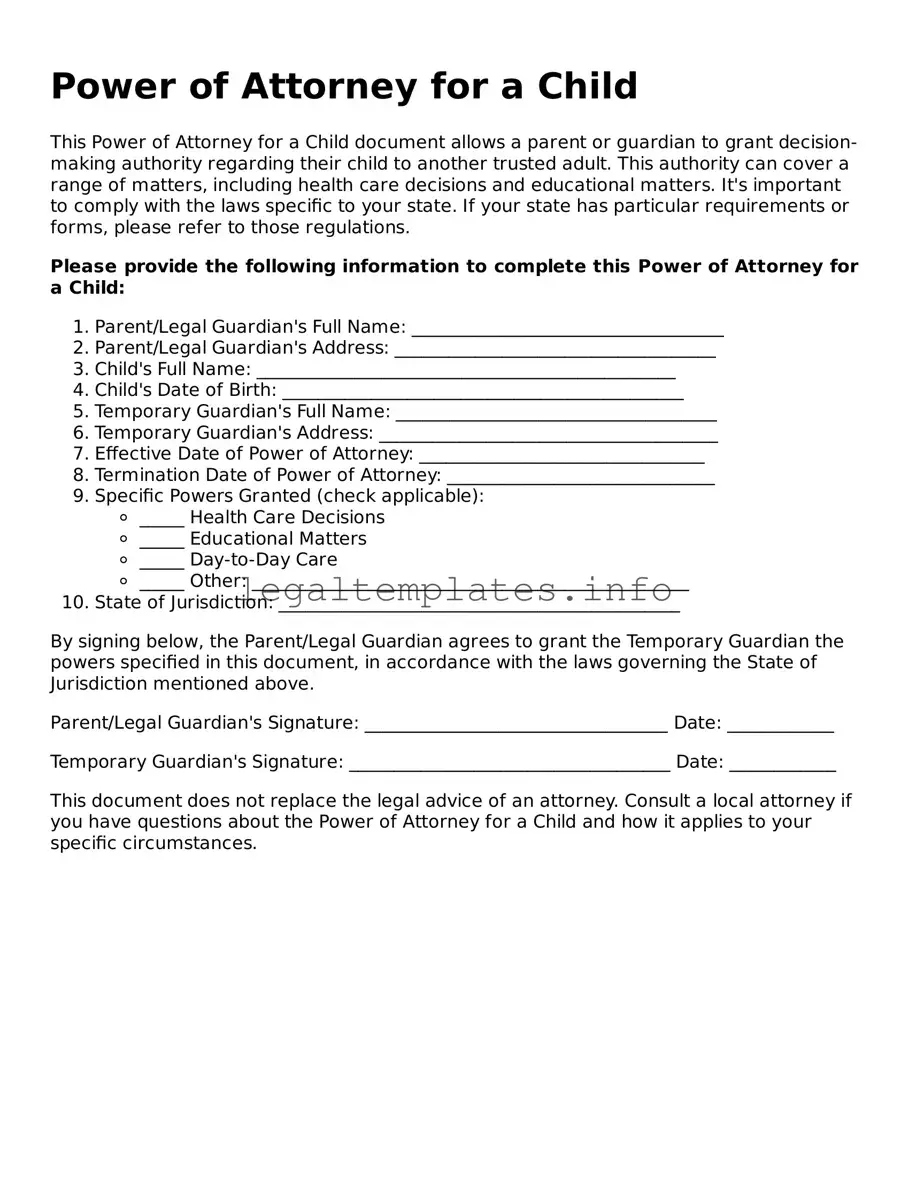Similar to the Power of Attorney for a Child form, the Medical Power of Attorney designates an individual to make healthcare decisions on behalf of someone else, usually when they are incapacitated or unable to make decisions for themselves. This similarity lies in the essence of appointing a trusted individual to act in the best interest of the person they represent, focusing specifically on health-related decisions.
The General Power of Attorney is a broad authorization that grants an agent the power to perform almost any legal act on behalf of someone else, like signing documents, buying or selling assets, and handling financial matters. This document shares its foundational idea with the Power of Attorney for a Child by empowering someone else to make decisions and act on behalf of the principal, but it applies to a wider scope of activities beyond just care for a child.
A Guardianship Agreement is a legally binding document that assigns an individual the responsibility of caring for a child or an incapacitated adult. This parallels the Power of Attorney for a Child in its goal to ensure the well-being of someone unable to fully care for themselves. Nevertheless, a guardianship usually involves a court process and results in a more permanent arrangement than the typically temporary and more easily revocable Power of Attorney.
The Educational Power of Attorney grants someone the authority to make educational decisions for a child, including enrollment in school and access to school records. Similar to the Power of Attorney for a Child, it centers around the well-being and development of the child. However, its scope is more limited, focusing exclusively on education rather than encompassing all aspects of care and decision-making.
A Financial Power of Attorney authorizes an agent to handle financial matters on another person’s behalf, which can include managing bank accounts, paying bills, and investing money. This document shares the concept of entrusting someone with significant responsibility over personal affairs with the Power of Attorney for a Child. The primary difference is the focus on financial decisions as opposed to the broader care and custody matters addressed in a Power of Attorney for a Child.
Similar to those outlined above, the Durable Power of Attorney remains in effect even if the principal becomes incapacitated. This enduring nature is a critical similarity to the Power of Attorney for a Child, as it ensures continuous care and decision-making authority. However, the Durable Power of Attorney can encompass a variety of areas including but not limited to health care, financial affairs, and personal property, making it broader in scope.
The Limited Power of Attorney grants an agent the authority to act on behalf of the principal in specific matters or events. For example, it may allow someone to sell a car or represent the principal at a real estate closing. This document shares with the Power of Attorney for a Child the core principle of representing someone else's interests, but it is much more narrowly defined in terms of scope and duration.
Lastly, the Advance Health Care Directive, also known as a living will, allows individuals to outline their preferences for medical treatment and end-of-life care. While this document focuses primarily on health care decisions, it similarly involves designating an agent to ensure those preferences are honored, reminiscent of the way a Power of Attorney for a Child appoints a caregiver to make decisions for a child’s well-being.
